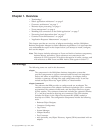
Connector
architecture
The
connector
has
been
designed
following
the
meta-data
design
principles
as
outlined
in
the
Connector
Development
Guide
for
Java.
This
means
that
existing
application-specific
business
objects
can
be
extended
and
customized
and
new
business
objects
can
be
defined
without
requiring
additional
coding
or
customization
in
the
connector
code.
The
following
diagram
illustrates
the
Siebel
connector
architecture.
How
the
connector
works
This
section
describes
how
meta-data
enhances
the
connector’s
flexibility,
and
presents
a
high-level
description
of
business
object
processing
and
event
notification.
The
connector
and
meta-data
The
connector
is
meta-data-driven.
Meta-data
is
application-specific
data
that
is
stored
in
business
objects
and
that
assists
the
connector
in
its
interaction
with
the
application.
A
meta-data-driven
connector
handles
each
business
object
that
it
supports
based
on
meta-data
encoded
in
the
business
object
definition
rather
than
on
instructions
hardcoded
in
the
connector.
A
business
object
corresponds
to
a
Siebel
business
component.
For
more
information
about
business
objects,
see
Chapter
6,
“Using
the
adapter
with
Siebel
business
services,”
on
page
73
Business
object
meta-data
includes
the
structure
of
a
business
object,
the
settings
of
its
attribute
properties,
and
the
content
of
its
application-specific
information.
Because
the
connector
is
meta-data
driven,
it
can
handle
new
or
modified
business
objects
without
requiring
modifications
to
the
connector
code.
CWConnector API
Siebel connector agent
Integration broker
Siebel
Java
data bean
User interface
Event
notification
BOHandler
Siebel enterprise server
Siebel client administration manager
WebSphere InterChange Server
event and archive store
Siebel business objects
Siebel eBusiness application
Via CW Event and
CW Archive usiness
components
""
"" b
Figure
1.
Siebel
connector
architecture
Chapter
1.
Overview
3


















